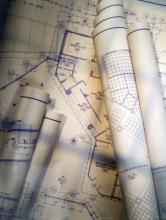
Playground design has evolved over the years to offer a wide array of equipment and features from traditional steel structures fixed in concrete and arranged in a row to contemporary structures with imaginative and innovative elements to engage children’s interest.1
Playground design has been affected by the Americans with Disabilities Act, which was signed in 1990 to assure full equality for people with disabilities.2 However, to satisfy the requirements, accessible playgrounds have often been designed to only allow an accessible route to the playground equipment with little thought of providing inclusive play with others.3 Accessible design tends to focus on the minimum requirements for a select group of users.4
A group of architects, product designers, engineers, and environmental design researchers collaborated to produce guideline principles for “the design of products and environments to be usable by all people, to the greatest extent possible, without the need for adaptation or specialized design.”5 These principles consider the broader needs of the population, and the design concept was called universal design.6
The seven Principles of Universal Design are:
- PRINCIPLE ONE: Equitable Use - The design is useful and marketable to people with diverse abilities.
- PRINCIPLE TWO: Flexibility in Use - The design accommodates a wide range of individual preferences and abilities.
- PRINCIPLE THREE: Simple and Intuitive Use - Use of the design is easy to understand, regardless of the user's experience, knowledge, language skills, or current concentration level.
- PRINCIPLE FOUR: Perceptible Information - The design communicates necessary information effectively to the user, regardless of ambient conditions or the user's sensory abilities.
- PRINCIPLE FIVE: Tolerance for Error - The design minimizes hazards and the adverse consequences of accidental or unintended actions.
- PRINCIPLE SIX: Low Physical Effort - The design can be used efficiently and comfortably and with a minimum of fatigue.
- PRINCIPLE SEVEN: Size and Space for Approach and Use - Appropriate size and space is provided for approach, reach, manipulation, and use regardless of user's body size, posture, or mobility.7
The purpose for utilizing the Principles of Universal Design for children’s playgrounds is to provide “inclusive play where every child, regardless of ability or disability, is welcomed and benefits physically, developmentally, emotionally and socially from the environment.8
- 1. Frost, Joe L. Play and Playscapes. Albany, NY: Delmar Publishers Inc., 1992. pp. 133-134.
- 2. Ibid. p. 297.
- 3. Kaplan, Mara and Ian Proud. “Play for All – Thinking Outside the Ramp.” Accessible Playgrounds. < http://www.accessibleplayground.net/?p=2079 > 7 July 2011.
- 4. Skulski, Jennifer K. “Designing for Inclusive Play: Applying the Principles of Universal Design to the Playground.” National Center on Accessibility. < http://www.ncaonline.org/?q=node/331 > 7 July 2011.
- 5. “The Principles of Universal Design.” North Carolina State University. The Center for Universal Design. < http://www.ncsu.edu/project/design-projects/udi/center-for-universal-design/the-principles-of-universal-design/ > 7 July 2011.
- 6. Op. cit., Skulski.
- 7. Op. cit., “The Principles of Universal Design.”
- 8. Op. cit., Skulski.

